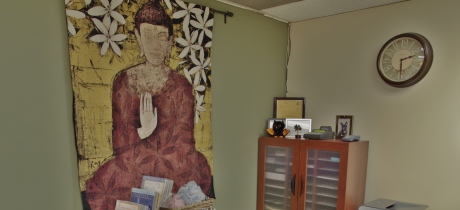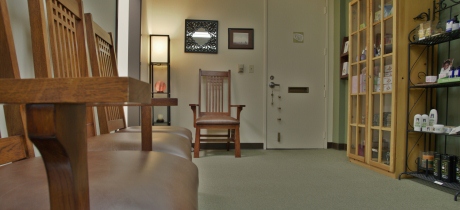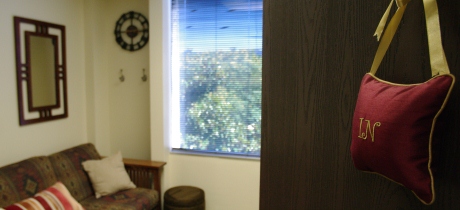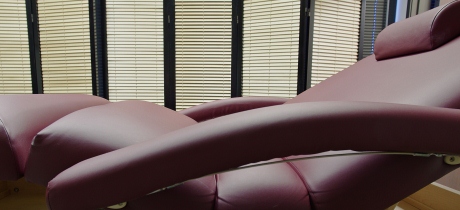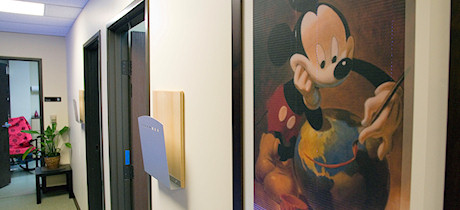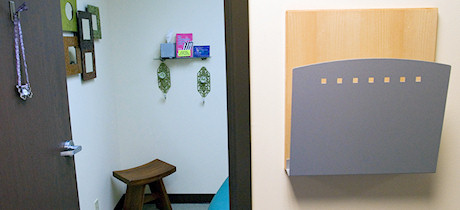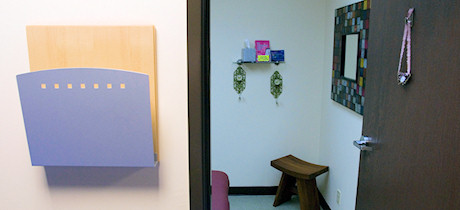Aroma Acupoint Therapy™
Adapted from the Snow Lotus website to include an overview of AAT. For the complete article, click here:
Aroma Acupoint Therapy, or AAT (as we like to call it) is a gentle, completely safe and yet profoundly effective treatment modality that utilizes the energetic potential locked within pure essential oils.
Treatment involves placing particular oils on specific acupoints or reflex zones on the body in order to trigger energetic changes in the individual that will bring her back to a state of balance.
Aroma Acupoint Therapy works on the basis of mutual resonance through the systematic and intentional combination of essential oils and acupoints, resulting in a more significant clinical effect than using either of these treatment methods alone.
HOW AROMA ACUPOINT THERAPY WORKS
How does Aroma Acupoint Therapy work? The basic premise is that essential oils, being energetically just as active as acupuncture points, have the ability to stimulate the points in a similar way as needles. However, the difference between them lies in the fact that unlike acupuncture needles, essential oils are also able to provide a content of information to the point that will suggest a particular type of therapeutic action.
The basic aim is always to select an oil that possesses the same function as an acupoint; an oil that will activate a particular point function.
... there are several theories that would help explain the body-mind's often immediate response to oil-point treatment as well as this therapy’s long-term effectiveness. One is that the oils are able to activate peptides connected with the points that through the meridian energy pathways transmit the suggested action to specific target tissues, organs, and so on.
The simplest explanation, however, is the universal principle of reciprocal resonance. Oils and points possessing a similar quality and function will energetically resonate with each other and create a particular sonic vibration. This would be the same as the sound created when a peptide docks into a receptor site. This is essentially how a therapeutic effect is achieved.
THE FRAGRANCE ENERGETICS OF ESSENTIAL OILS
The basic framework for the use of essential oils in Aroma Acupoint Therapy is a clinical, empirical model of the energetic properties of essential oils based on their aromatic or fragrance qualities.
The oils are broadly divided into high, middle and base tones, corresponding to their rising, circulating and sinking energetic movements, respectively.
Within an oil’s group function then lies its own separate functions, which span specific physiological actions, psychological functions through to spiritual functions. Any of these may be engaged during treatment.
THE TREATMENT SEQUENCES
Aroma Acupoint treatment consists of just one or two drops of an essential oil being lightly applied to the acupoint with a finger or cotton swab and held in place for a short amount of time.
The practitioner will select one or more treatment sequences or patterns that typically involve activating between three and eight points. In the context of bodywork, this may be followed and/or introduced by massage, deep tissue work, etc. In the context of acupuncture, this may be optionally followed by needling the points.
Although Aroma Acupoint Therapy lends itself beautifully to being used alongside these other types of treatment, it does not rely on these for its effectiveness and successfully stands alone as a method of treatment.
Evaluating the symptoms the client presents is performed using the Six Condition diagnostic assessment, a user-friendly diagnostic system that Peter again developed over many years of practice and research into the diagnostics of traditional Chinese, Greek and Ayurvedic medicine – the three extant world systems of energetic medicine.
The symptoms may be mental, emotional or purely physical and form syndromes of energetic imbalance. The main axis of imbalance seen in our society is the axis of the Tense-Weak conditions, which is based on hyper- and hypo- functioning of the nervous system, respectively.
Commonly seen as well, however, are symptoms of imbalance between the Hot-Cold axis, based on hyper- and hypo- functioning of the body’s warmth-circulatory system; and the Dry-Damp axis, based on tissue hydration and fluid balance.
The symptom evaluation itself includes not only what the client reports but also an assessment of her facial complexion, skin quality, muscle tone, breathing, voice, pulse quality, physical movement, likes and dislikes as regards food, drink, climate, and so on. These all together tell the practitioner the nature of the imbalance in terms of the Six Conditions and will point to possible treatment patterns.
Once treatment is underway, the practitioner will monitor its effectiveness by looking for positive signs of change in the client’s complexion, their brightness of the eyes, sound of the voice and improvement of the pulse quality, as well as improvement of actual symptoms. It is not unusual to find improvement in all of these diagnostic parameters by the end of a successful treatment and, in some cases, very soon after all the oils have been placed.
ORGIN
The origins of Aroma Acupoint Therapy go back to Peter’s acupuncture practice in the 1980s when he became involved with Aromatherapy as it developed in England at that time. Realizing that essential oils were just as electromagnetically powerful as acupuncture needles, he began experimenting on patients by placing a drop of oil on a point instead of stimulating it with a needle. Many years of experimentation and observation then led Peter to develop the experiential model of aroma energetics for the essential oils described above. Since the early 1990s this model has formed the foundation for understanding the inner or energetic nature of essential oils and their effects on body, mind and soul. It is the cornerstone today of the energetic approach to using the oils in Aroma Acupoint Therapy.
In 2010, Peter began collaboration of his work with essential oils with Tiffany Pollard, a practicing acupuncturist and bodyworker. Tiffany’s multi-practitioner clinic in Washington allowed for the use of the oils on a much greater scale than ever before, involving their consistent use in treating up to 75 patients a week. This intensive, ongoing exploration of the clinical actions of essential oils rapidly generated a large pool of clinical experience that eventually led to the creation of the first Aroma Acupoint Therapy workshop in September 2011.
BIOGRAPHICAL SUMMARIES
Peter Holmes L.Ac., M.H., directs Snow Lotus Seminars and teaches Aroma Acupoint Therapy™ workshops together with Tiffany Pollard. He has authored several textbooks on herbal medicine, both Western and Oriental, as well as a book on essential oils. To check out his books, click here.
Tiffany Carole Pollard M.S., L.Ac., teaches Five-Element acupuncture at Bastyr University in their Chinese Medicine masters degree program and co-teaches Aroma Acupoint Therapy™ workshops with Peter Holmes. She directs Synergy Wellness Center in Kirkland, Washington, a holistic clinic that focuses on energetic medicine and bodywork, offering a synergy of different treatment modalities in the field of complimentary medicine. http://www.thesynergywellnesscenter.com/
© Peter Holmes & Tiffany Pollard 2011
